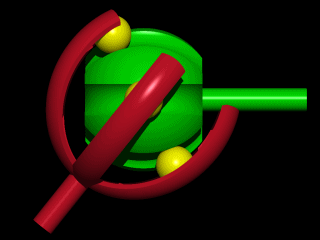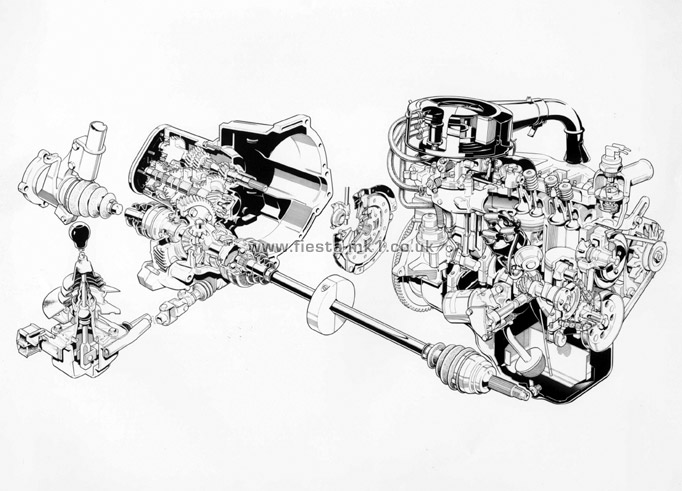http://www.minisport.com/mini-spare-parts/info_C_MAD005.html

[Edited on 13/8/12 by iank]

I understand that FWD cars with offset diffs are prone to torque steer. Is this purely because of the unequal length driveshafts?
If so, is there any way to neutralise the unwanted handling characteristics? Weight / balance the shorter shaft to the longer one?
Cheers!
Equal length shafts can help, my clio 172 and 197 had them and it wasn't as bad as my red topped Nova that didn't.
Sometimes they make the longer shaft fatter i.e. stiffer so it winds up the same amount. Hence if done properly should eliminate problem.
Cheers!
quote:
Originally posted by scootz
I understand that FWD cars with offset diffs are prone to torque steer. Is this purely because of the unequal length driveshafts?
If so, is there any way to neutralise the unwanted handling characteristics? Weight / balance the shorter shaft to the longer one?
Cheers!

quote:
Originally posted by v8kid
Sometimes they make the longer shaft fatter i.e. stiffer so it winds up the same amount. Hence if done properly should eliminate problem.
Cheers!
quote:
Originally posted by MikeRJ
quote:
Originally posted by v8kid
Sometimes they make the longer shaft fatter i.e. stiffer so it winds up the same amount. Hence if done properly should eliminate problem.
Cheers!
I don't believe "wind up" has anything to do with it, because with a conventional diff the torque in each driveshaft is always balanced so although one driveshaft may twist more the same level of torque is being delivered to each wheel. Driveshaft angle is more important however, and unequal length driveshafts typical give unequal angles. IME the biggest contributor of all is suspension geometry, both static settings and the amount by which everything moves under load.

Torque steer is due to unequal angles of the drive shafts in relation the outer CV joints.
A turning moment about the steering axis is created internally by torque reactions within the cv joints.
Equal length drive shafts are fitted on more powerful and upmarket models to ensure the drive shafts enter the CV joints at as near equal
angles as possible.
If the driveshaft lengths (and ride height) are equal left to right then the torque steer generated within the left and right CV joints should
cancel each other out.
[Edited on 13/8/12 by britishtrident]
There are kits available for the classic mini which do the same as Zil's design with the fwd gearbox/diff.
http://www.minisport.com/mini-spare-parts/info_C_MAD005.html

[Edited on 13/8/12 by iank]
Cheers all!
Onto my next Q... say you had a rearward facing gearbox output shaft 11cm to the right of a vehicles centre line and you wanted to connect it to a
centrally positioned diff flange using as short a prop as possible. Theoretically, how little distance could you be looking at between the
two?
I suppose another way of asking the same Q is, how acute an angle can you run with a typical CV joint?
They will operate up about 40 degrees for steering but for continuous running I would use not much over 20 degrees .
Ta!
quote:]]
Originally posted by scootz
Cheers all!
Onto my next Q... say you had a rearward facing gearbox output shaft 11cm to the right of a vehicles centre line and you wanted to connect it to a centrally positioned diff flange using as short a prop as possible. Theoretically, how little distance could you be looking at between the two?
I suppose another way of asking the same Q is, how acute an angle can you run with a typical CV joint?

quote:
Originally posted by zilspeed
None of this is hypothetical though, is it ?

Torque steer of false wheel drive cars is the price to be paid for having a differential/drive on the same axle as the steering wheels. Equalising the driveshaft lengths helps but its still much more than can be found with real wheel drive cars. Move the FWD engine/trans to the rear so the steering wheels arn't on the same axle - simples.
quote:
Originally posted by v8kid
You could well be right that the angularity plays a small part but I think the torsional rigidity effect would be larger.
Thinking about what happens - its not a steady difference in twisting, the wheels are gripping and letting go and then gripping again. In this uneven grip the energy stored in the twisting of the driveshaft would be significant. When it lets go it releases a burst of torque and when it grips it absorbs the torque. So the drive is alternating between sides of the car pulling it one way and then the other. If the suspension is really badly designed the frequency of this twisting pulsation would match the suspension frequency and then it would really dart about. IMHO
Even in the "steady state" why is a longer screwdriver more effective than a short one? Stored energy in the torsion is my bet
As Zil says though easier for us to take the effort to have equal driveshafts.
Cheers!
 Ask another old time joiner and I'll bet you get the same answer as mine.
Ask another old time joiner and I'll bet you get the same answer as mine. quote:
Originally posted by v8kid
 Ask another old time joiner and I'll bet you get the same answer as mine.
Ask another old time joiner and I'll bet you get the same answer as mine. Yup I agree
Cheers!
First of the reason why longer shafts are a larger diameter is to change the critical vibration frequencies of the shaft. In any event even on
a car with equal length outer drive shafts the total length of drive shaft going to one wheel will be longer as it will comprise the
length of the inner shaft + the length of outer shaft.
Secondly Newton's laws state that every reaction has an equal and opposite reaction, this applies equally to torques. A torque applied at
one end of a shaft must be resisted by an equal but opposite at the other end.
An everyday situation the gives very simple model of torque steer is using a universal joint on the end of a socket set extension.
When torque is applied the socket will tend to twist off the nut. The severity of the twisting off effect is governed by the size of the angle
the extension bar makes with the universal joint not the length of the extension bar.
Torque Steer can actually be demonstrated by jacking up a fwd car with both driven wheels clear of the deck. Take all sensible safety
precautions set the steering wheel straight ahead and start the engine.
Put the car in gear and increase the RPM, if the car has unequal length outer shafts there will be a pronounced kick of the steering wheel to full
lock. This won't happen on a car with equal lengths shafts.
Torque steer is caused by the relative position of the ball bearings that transmit the forces between the spider of the CV joint and the outer
part of the CV joint.


[Edited on 14/8/12 by britishtrident]
^^ that all makes sense to me (I think)
so can anyone explain what the big weight clamped round the longer shaft on my old mk1 fiesta ?

I could never work out what that was meant to be doing......
also I take it a FWD car with a large scrub radius is just exaggerating any torque steer that happens to be there already ?? (or have a I missed
something ?  )
)
i.e. why ford and the likes have been banging on about it on the new RS etc....

The big weight on the drive shaft is a vibration damper to alter the resonant frequency of the drive shaft, more up market fwd cars use a
vibration damper with a rubber insert which is more effective over a wider spread of frequencies.
Scrub radius effects the "tug" and kick back through the steering but isn't really anything to do with torquesteer.
[Edited on 14/8/12 by britishtrident]
If equal length, same material spec drive shafts, and running at the same angles help to eliminate torque steer, how come my Cloverleaf Sprint was so bad?
quote:
Originally posted by britishtrident
The big weight on the drive shaft is a vibration damper to alter the resonant frequency of the drive shaft, more up market fwd cars use a vibration damper with a rubber insert which is more effective over a wider spread of frequencies.

Soooo... for arguments sake (of course  )...
)...
Would it be advantageous to machine a spacer to extend one diff output flange (say 10cm) to allow for equal length / angled shafts?
quote:
If equal length, same material spec drive shafts, and running at the same angles help to eliminate torque steer, how come my Cloverleaf Sprint was so bad?
Dunno 'bout that I've had cars with unequal length drive shafts and they all exhibited TQ steer under heavy accel.
When and if:-) their motors were powerful enough :-)
My Saab Aero with it's slightly tweaked perf ~270 hp? has NO tq steer whatsoever, even at boost onset.
IMO due to it's equal length drive shafts.
Unlikely that's attributable to it's erm.. Simple ..strut suspension.